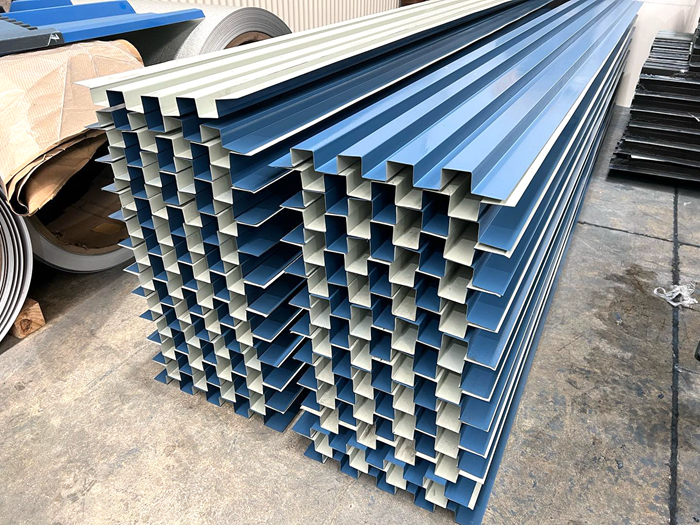Advanced Downpipe Roll Forming Machine for Efficient Production of Durable Drainage Solutions
The Importance of Downpipe Roll Forming Machines in Modern Manufacturing
In the realm of modern manufacturing, the efficiency and precision of metal forming processes are paramount. One such process that stands out is roll forming, particularly when it comes to downpipes and related products. A downpipe roll forming machine is an essential tool in the production of downpipes, which are critical components for drainage systems in buildings, ensuring effective rainwater management.
Understanding Roll Forming
Roll forming is a continuous bending process in which long strips of metal are passed through a series of rollers that progressively shape the metal into the desired cross-sectional profile. This method is particularly suitable for producing parts like downpipes, which require consistent shapes and profiles across long lengths. Downpipe roll forming machines maximize efficiency by enabling high-speed production with minimal waste, making them an invaluable asset in manufacturing environments.
Components of a Downpipe Roll Forming Machine
A typical downpipe roll forming machine consists of several key components
1. Uncoiler The raw material, usually in the form of a coiled steel strip, is fed into the machine through an uncoiler. This component ensures a continuous supply of material for the roll forming process.
2. Roll Forming Stations These are the heart of the machine. They consist of a series of rollers designed to gradually shape the metal into the desired profile—typically a U or square shape for downpipes. Each station applies a specific amount of pressure and angle to achieve the required dimensions.
3. Cut-off Mechanism Once the metal has been formed, it needs to be cut to the specified lengths. The cut-off mechanism ensures precise cuts, reducing scrap and ensuring consistency across all produced units.
downpipe roll forming machine

4. Control System Modern downpipe roll forming machines are equipped with advanced computer numerical control (CNC) systems. This allows for programming of different profile shapes and lengths, offering flexibility in production runs and the ability to quickly switch between different product specifications.
Benefits of Using Downpipe Roll Forming Machines
1. Efficiency One of the primary advantages of using roll forming is its high production rate. Machines can run at speeds significantly faster than many other forming processes, allowing manufacturers to meet high demand.
2. Consistency The automated nature of roll forming ensures high precision in the dimensions and profile of the downpipes produced. This is crucial for ensuring compatibility with existing drainage systems and for maintaining the quality standards expected by customers.
3. Material Utilization Roll forming is a process that minimizes waste. The continuous nature of the operation allows for the use of long strips of metal, with offcut material being reduced to a minimum. This not only saves on raw material costs but also reduces the environmental impact associated with manufacturing.
4. Versatility Modern downpipe roll forming machines can be adjusted to produce varying sizes and profiles, making them adaptable to different projects and customer needs. This versatility is a significant advantage in today’s fast-paced manufacturing environment, where customization is often required.
Conclusion
As the construction industry continues to evolve, the importance of efficient and precise manufacturing processes cannot be overstated. Downpipe roll forming machines are at the forefront of this evolution, providing manufacturers with the tools necessary to produce high-quality drainage systems quickly and economically. With advancements in technology and automation, the future of downpipe production looks promising, bringing greater efficiencies and capabilities to the metal forming industry. The adoption of these machines not only supports the demand for innovative construction solutions but also paves the way for sustainable manufacturing practices that are crucial for the environment.
-
Top Drywall Profile Machine Models for SaleNewsJun.05, 2025
-
The Role of Purlin Machine in Modern Structural BuildingNewsJun.05, 2025
-
The Advantages of Investing in a Metal Roof Sheet Making MachineNewsJun.05, 2025
-
Key Features of Hydraulic Bending MachineNewsJun.05, 2025
-
Innovations in Standing Seam Metal Roof Machine TechnologyNewsJun.05, 2025
-
High - Performance Roof Panel Machine for SaleNewsJun.05, 2025
-
Key Features to Look for in a Roof and Wall Panel MachineNewsMay.23, 2025








